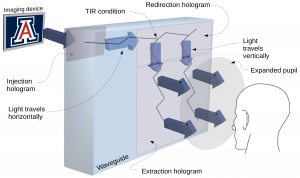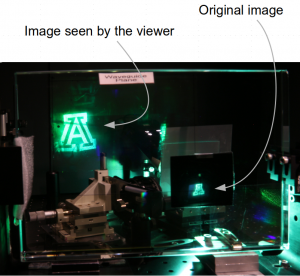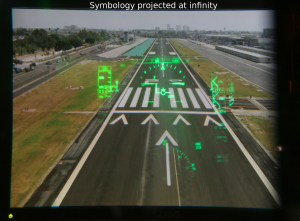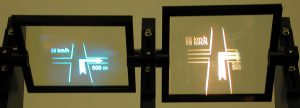Head Up Display & Augmented Reality
Abstract
Holography can offer unique solutions to the specific problems faced with optical systems. Frequently, when possibilities have been exhausted using refractive and reflective designs, diffraction can come to the rescue by opening a new dimension to explore. Holographic optical elements (HOEs), for example, are thin film optics that can advantageously replace lenses, prisms, or mirrors. Head up display (HUD) for vehicles and augmented reality (AR) glasses are two of the systems where our group have used HOEs to provide original answers to the limitations of classical optic. With HUD and AR, HOEs address the problems of the limited field of view, and small eye box usually found in projection systems. Our approach is to recycle the light multiple times inside a waveguide so the combiner can be as large as the entire windshield or the entire field of vision. In these systems, a hologram is used to inject a small image at one end of a waveguide, and another hologram is used to extract the image several times, providing an expanded eye box.
We gladly acknowledge the support from Honeywell and Texas Instruments for this project.


Publications:
- P.-A. Blanche, “Holographic Combiners Improve Head-Up Displays“, Photonics Spectra, May 2019. Link
- C. Draper et al. “Holographic waveguide head-up display with 2-D pupil expansion and longitudinal image magnification”, Applied Optics, Vol. 58, Issue 5, pp. A251-A257 (2019). Link
- P.-A. Blanche, at al., “Holography for Automotive Applications: from HUD to LIDAR”, Invited paper, SPIE proceedings 10757-11, Optics & Photonics, San Diego, August 2018.
- M. Bigler, P.-A. Blanche, and K. Sarma, “Holographic waveguide heads-up display for longitudinal image magnification and pupil expansion”, Applied Optics, 57(9), March 2018.
Pictures:




